La Paz is a city of extremes. At over 12,000 feet above sea level, it’s the highest capital city in the world, nestled dramatically in a valley surrounded by jagged peaks of the Andes. But it’s not just the altitude that takes your breath away. La Paz is a city of contrasts, where colourful markets meet historic plazas, and gondolas soar through the sky with stunning views at every turn.
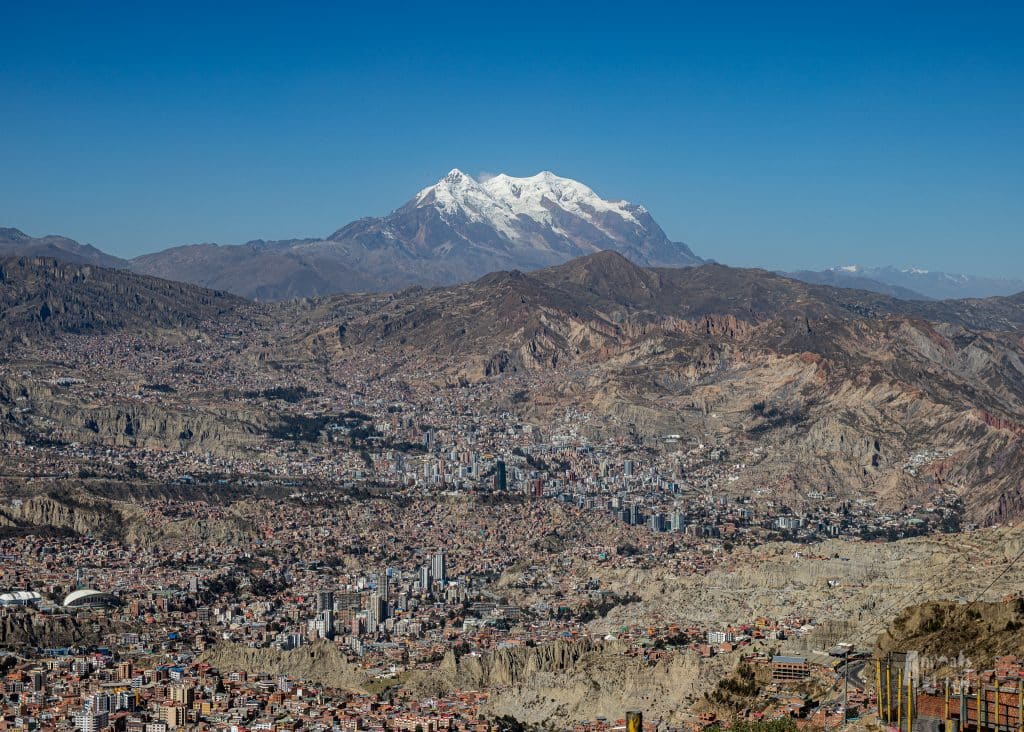
We spent five days exploring La Paz with our kids, balancing cultural experiences with outdoor adventures, and factoring in plenty of downtime to adjust to the altitude.
Here’s how to make the most of your time in La Paz.
A Note on Altitude and Flexibility
La Paz is a city like no other—breathtaking in every sense of the word. But its altitude means you have to build your itinerary around how your body reacts. Everyone acclimatizes differently; symptoms can range from mild headaches to nausea and exhaustion.
That’s why this 5-day itinerary is designed with flexibility in mind. We’ve spread out activities so you’re not overdoing it early on, especially if you’re travelling with kids. That said, if your family adjusts quickly, you could combine activities—like visiting Valle de la Luna in the morning and doing a walking tour or teleférico ride in the afternoon, allowing you to see more.
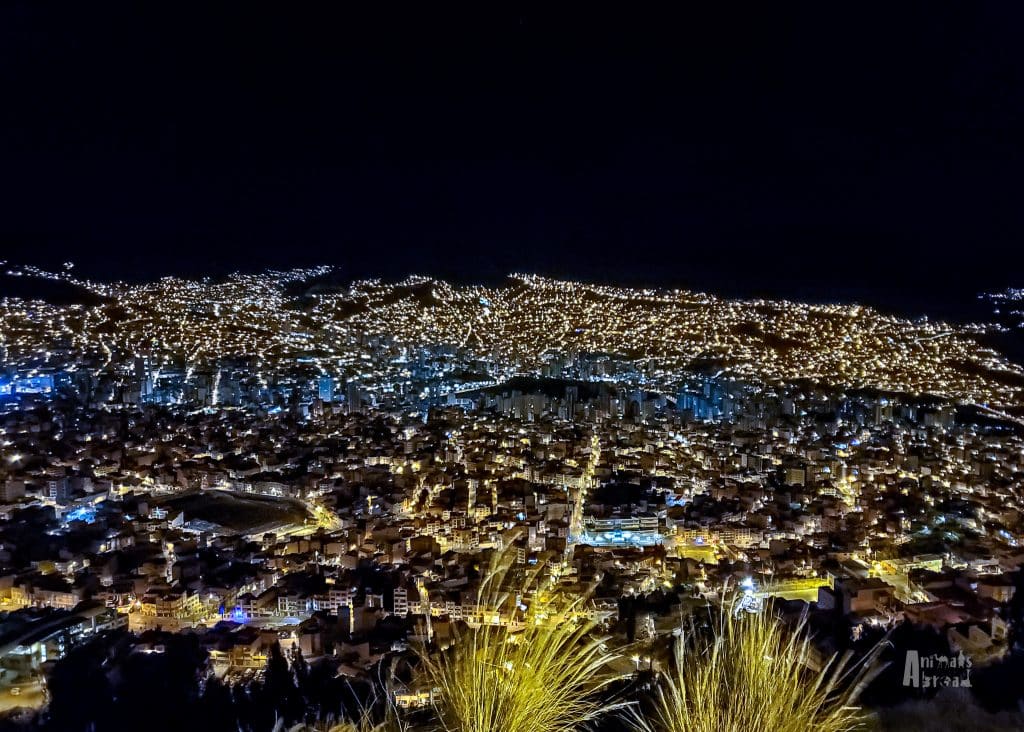
Day 1: Rest and Acclimatization
We arrived at El Alto airport at 3 a.m., and it didn’t take long to feel the effects of the altitude. Headaches, nausea, and dizziness hit us before we even left the airport. For context, La Paz sits more than twice as high as Denver, Colorado, and above the altitude airlines deploy emergency oxygen.
Though we were tempted to jump straight into sightseeing, our bodies had other plans. The most we managed was a short walk to a grocery store and resting at our accommodation. Even walking to the kitchen left us short of breath.
Tip: Everyone reacts differently to altitude. Consider building a full rest day into your itinerary, especially if you’re travelling with kids. Be kind to your body, stay hydrated, and don’t push through symptoms.
For tips on preventing and managing altitude sickness, check out our full post – Breathless in Bolivia: Managing Altitude Sickness as a Family
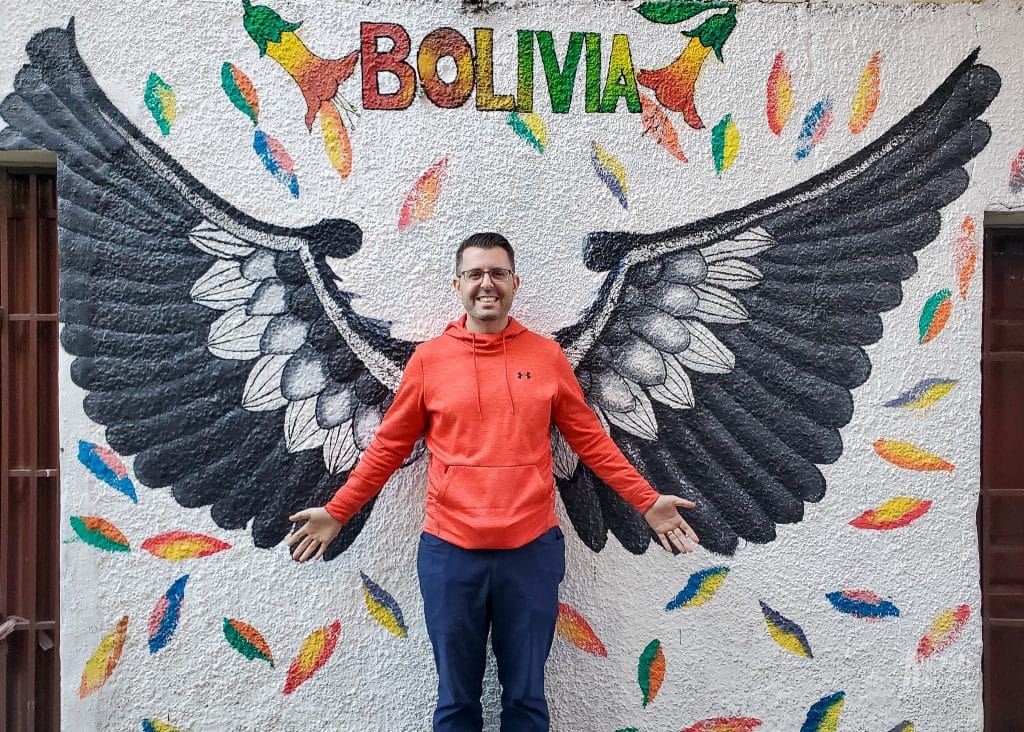
Day 2: Valle de la Luna
La Paz isn’t just about urban adventure—it’s also a gateway to surreal natural landscapes. Located just 20 minutes from the city, Valle de la Luna is an otherworldly geological site where centuries of erosion have sculpted sandstone into jagged spires and pinnacles.
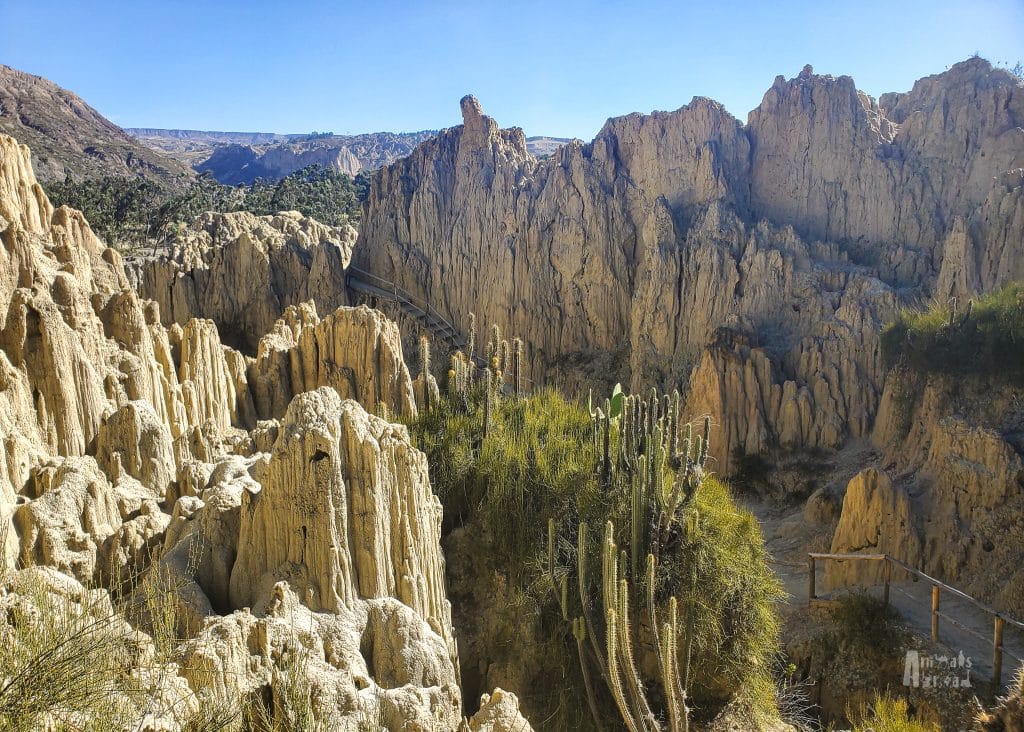
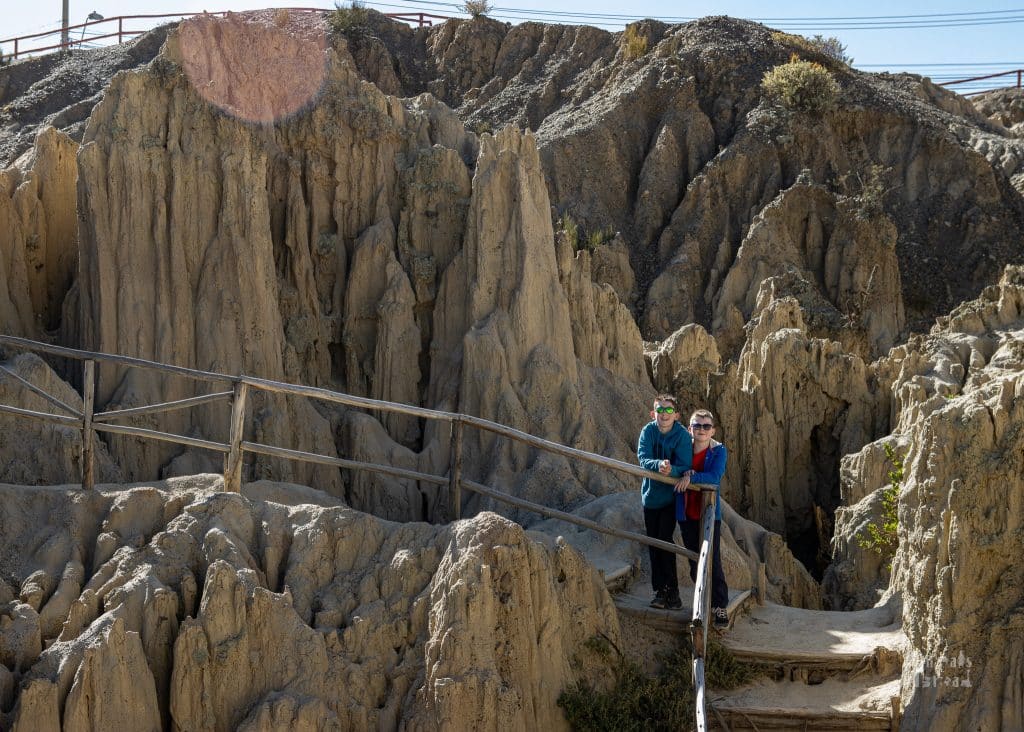
The name comes from Neil Armstrong, who visited and remarked that it resembled the moon’s surface. With well-maintained walking paths and dramatic views, the Valley of the Moon was the perfect outing as we continued to adjust to the altitude.
Time to explore: 1 to 1.5 hours.
Day 3: City Walk and Teleférico Adventure
La Paz’s unique geography—set in a steep valley surrounded by mountains—makes getting around an experience in itself. The city’s gondola network, the Teleférico, offers one of the world’s most scenic and efficient public transport systems.
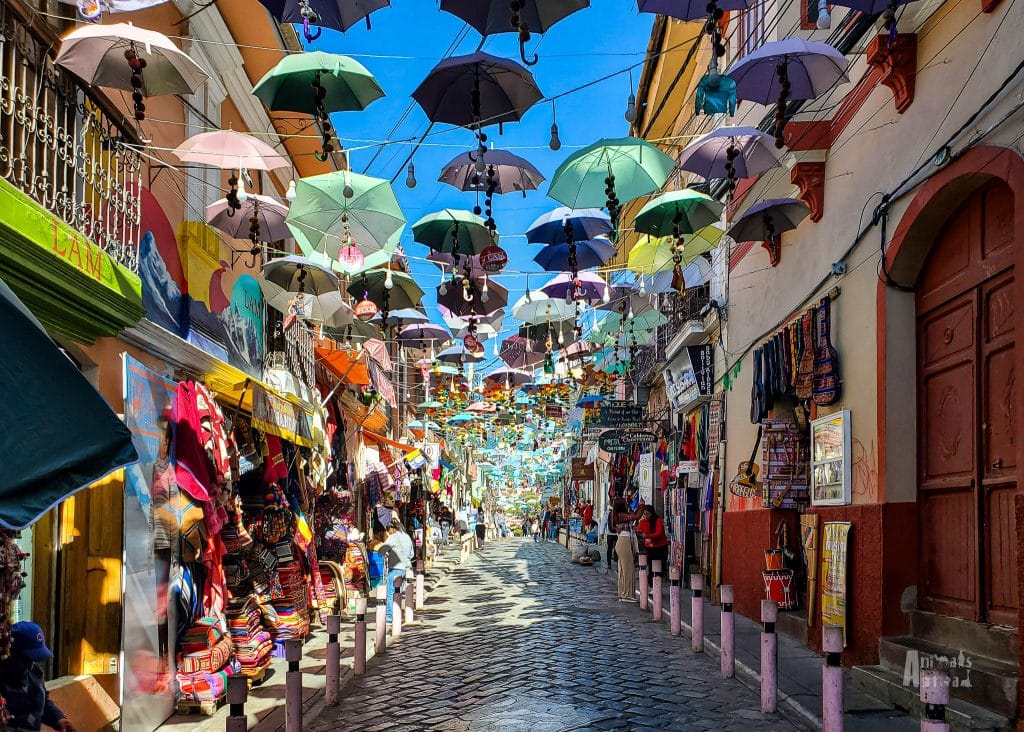
San Francisco Basilica & Plaza
We began our city tour at the historic San Francisco Plaza, anchored by the 16th-century Basilica of San Francisco. While we skipped the museum due to the cost ($15/adult, $5/child), the architecture and street performers made it a lively starting point. If you go inside, the museum offers a look at colonial-era religious art, and you can climb to the rooftop for panoramic views over central La Paz — a great way to appreciate the city’s dramatic layout from above.
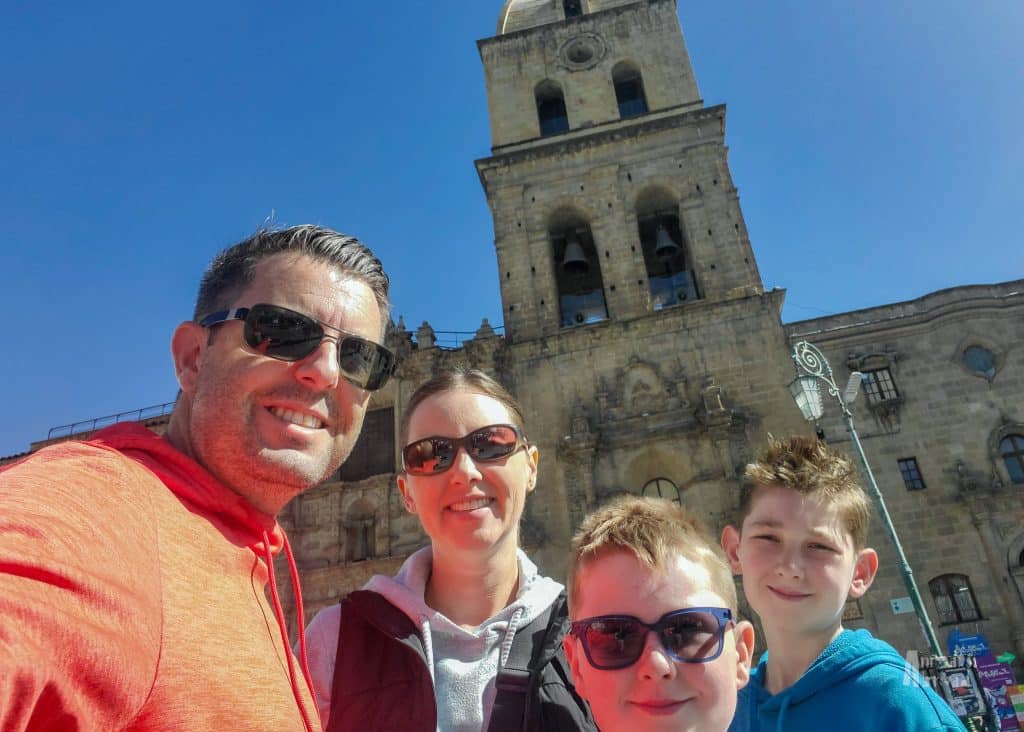
Sagárnaga Street & The Witches’ Market
From the plaza, we wandered into the vibrant Sagárnaga Street, lined with friendly vendors. From llama wool socks to the rare bolivianita jewelry, Sagárnaga Street is a fun place to explore and look for quirky souvenirs.
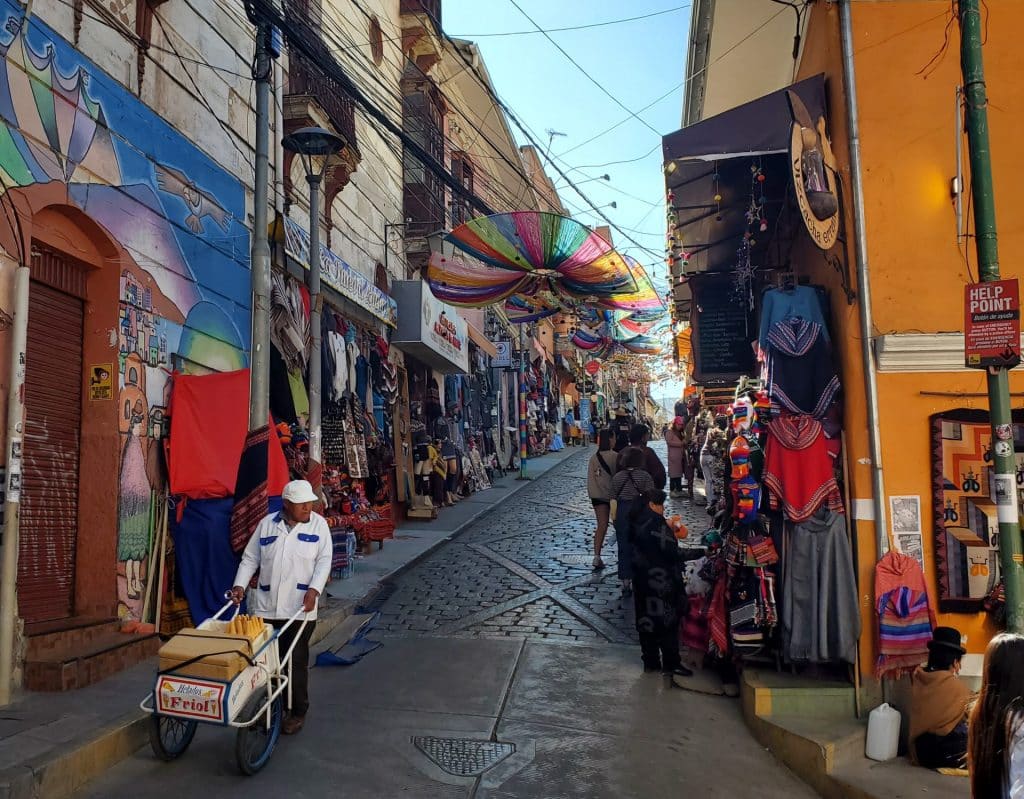
Just around the corner, the Witches’ Market offered a peek into Andean spirituality, with llama fetuses, herbal remedies, and ceremonial items.
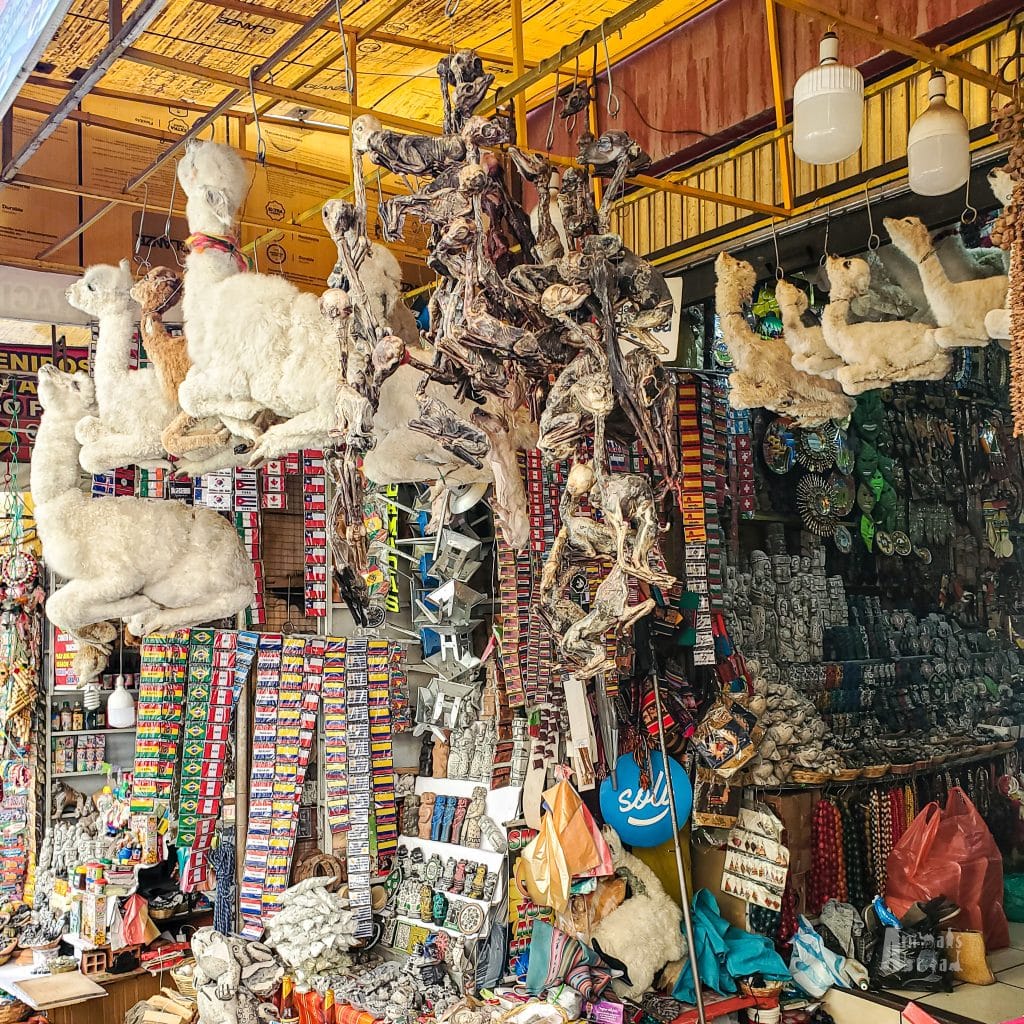
Coca Museum
This intimate museum offers a fascinating look into the complex history of the coca plant. In Bolivia, coca leaves are deeply woven into daily life and spiritual traditions, especially among Indigenous communities. The exhibits trace the plant’s journey from its sacred and medicinal uses to its controversial role in the global cocaine trade. It’s a thought-provoking stop that brings cultural and political layers of Bolivian history into sharp focus.
Exhibits are in Spanish, but English guidebooks are available at the entrance.
• Admission: ~$3 per person
• Time: 1–1.5 hours
Plaza Murillo
We took the Celeste (Sky Blue) Line to Prado Station and walked to Plaza Murillo, the political heart of Bolivia. The square features the Congress building, famous for its backward clock, where the hands move counterclockwise and the numbers are reversed. Installed as a symbol of Bolivia’s Indigenous roots and a challenge to colonial norms, it invites reflection on seeing the world differently. The square is also home to the Presidential Palace and the Metropolitan Cathedral. If you’re lucky, you might catch the changing of the guard—a hit with the kids.
Plaza Murillo is a great spot to sit, snack, and soak in the country’s political and cultural history.
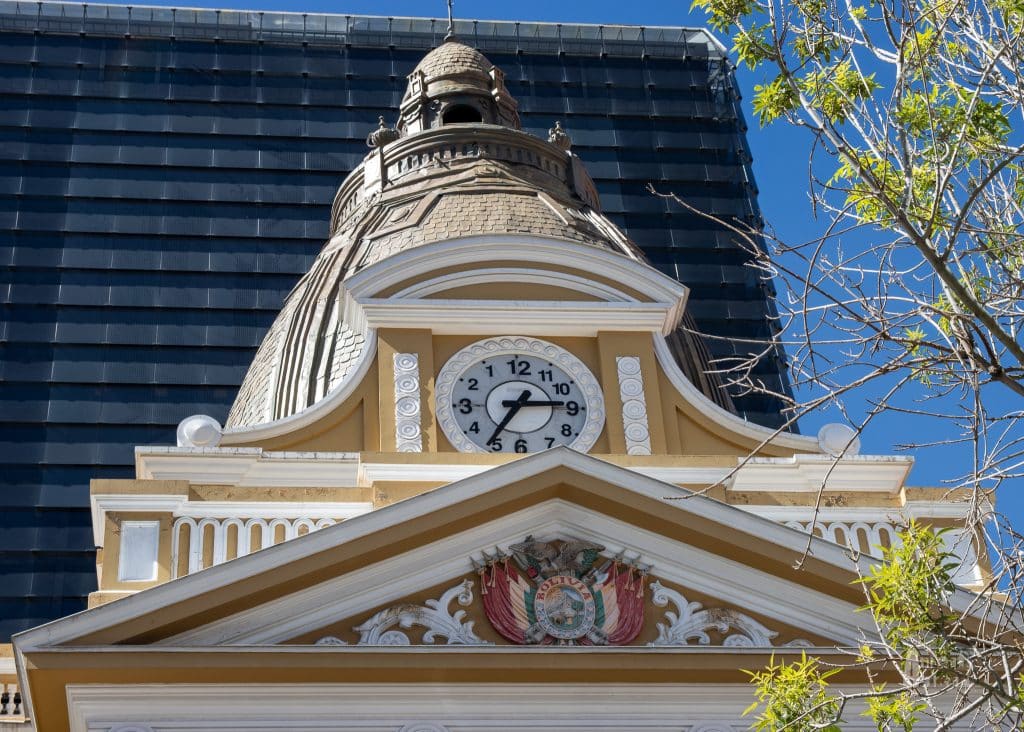
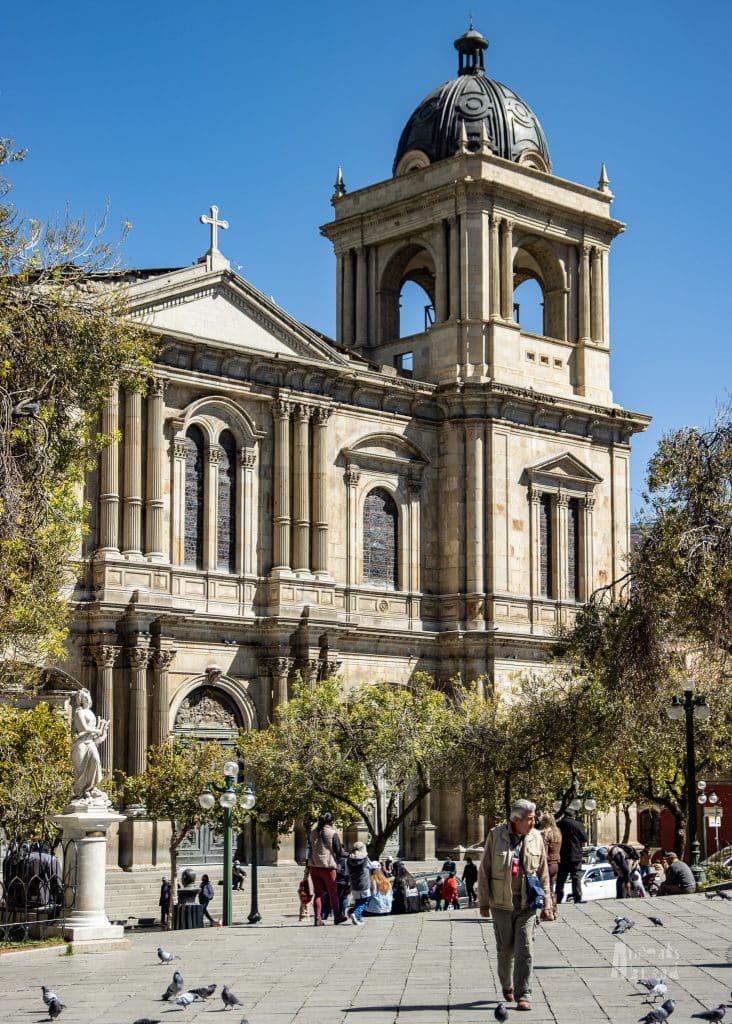
Calle Jaén
Calle Jaén, a narrow colonial street frozen in time, is a short walk from Plaza Murillo. Dating back to the 18th century, it’s lined with brightly painted buildings, wrought-iron balconies, and cobblestone paving. Once home to Spanish aristocrats, today it’s one of the prettiest streets in La Paz.
Take in the Street Art
We quickly realized that Bolivia is a country alive with street art. Every city we visited had splashes of colour and countless elaborate murals decorating buildings, alleyways, and underpasses. In La Paz, it felt like walking through an open-air museum, where bold imagery and political messages blend with everyday life.
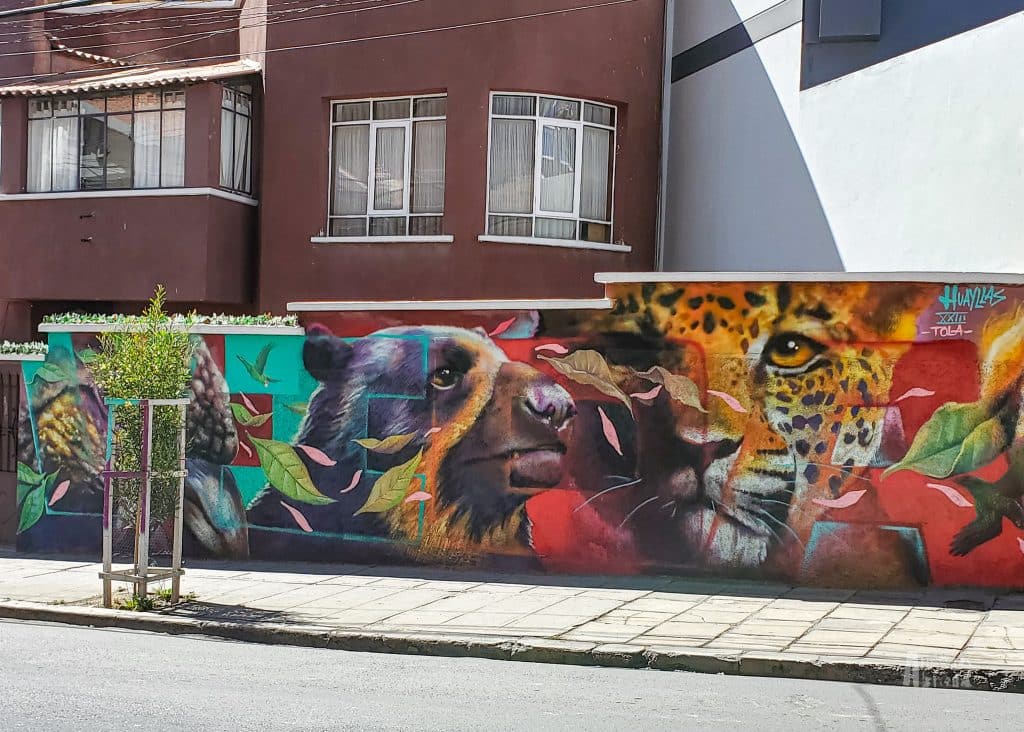
Red Line to 16 de Julio
The Roja (Red) Line offers some of the most scenic views of La Paz. As we ascended, we passed over the Cementerio General de La Paz—a visually striking cemetery that caught our attention from above.
Get off at 16 de Julio Station, which sits at 4,095 meters, to take in the full panoramic view of the city. Note: We still felt the altitude here after several days, so take it slow. The views are worth the trip up to the top, but I wouldn’t recommend doing this on your first day in La Paz.
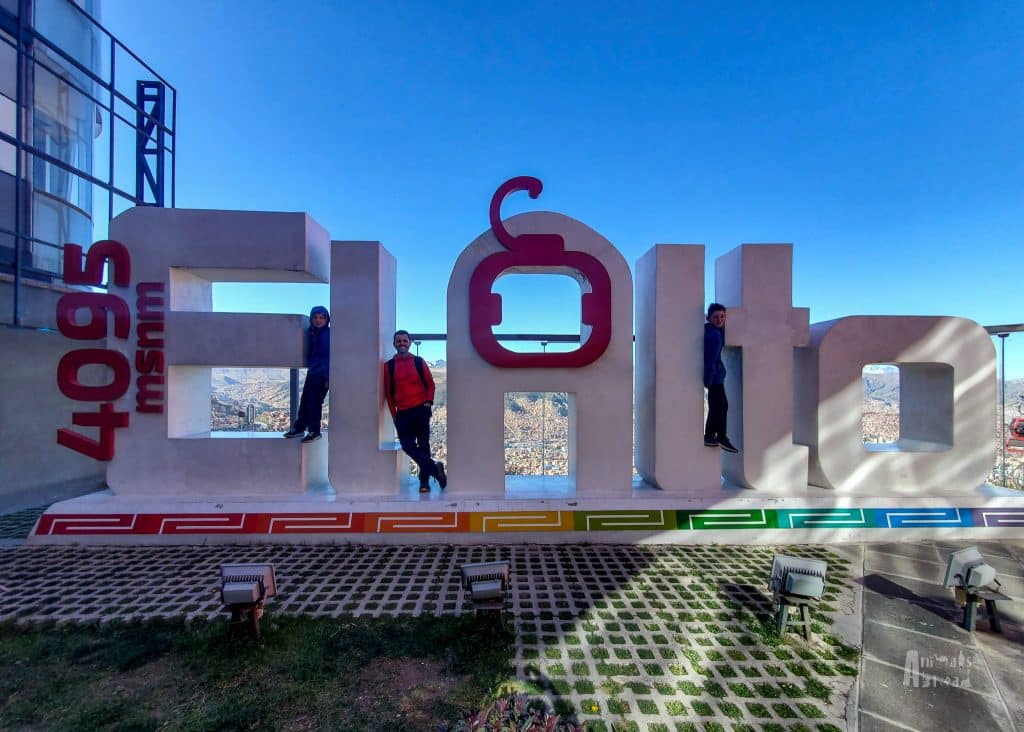
Cementerio General de La Paz
On the way down the Red Line, we stopped at Cementerio General. Though visiting a cemetery might seem like an unusual family activity, it was a moving and memorable experience. Built in the 18th century, the cemetery is a maze of intricately decorated tombs, many adorned with fresh flowers, photographs, and personal mementos. The layout is so vast that it has street names and maps to help visitors navigate. It offered a unique window into local customs surrounding death, remembrance, and community.
To reach the cemetery, take the red line to the Cementerio station.
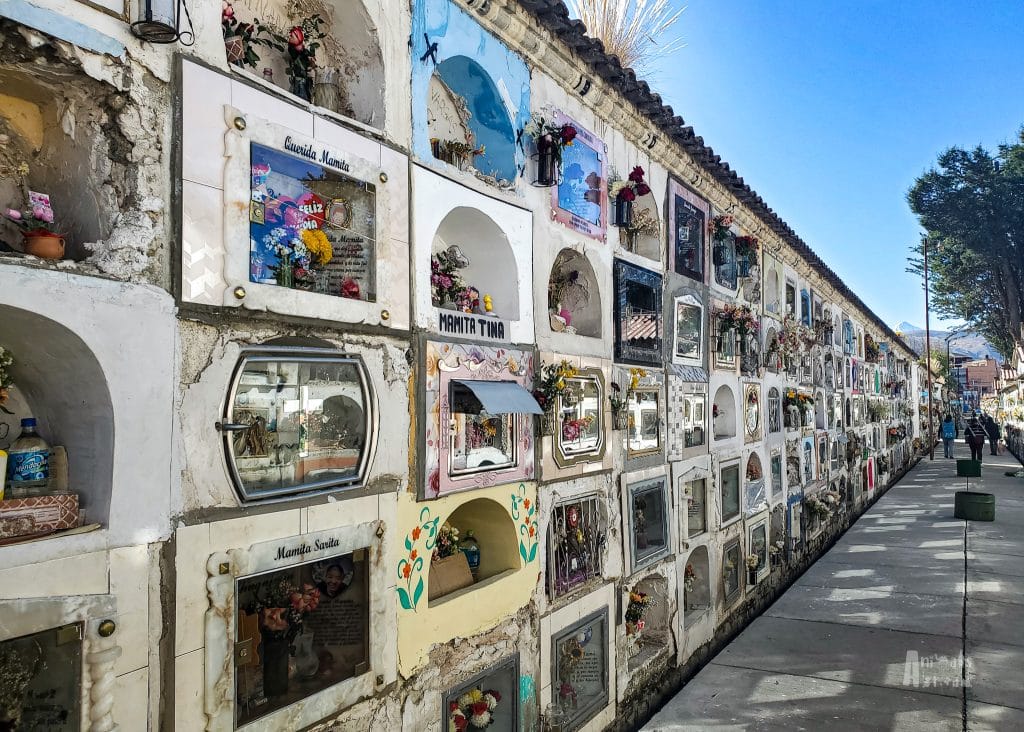
Teleférico Joyrides
Our boys loved the gondolas so much that we spent the rest of the day hopping from one line to the next, just for the views. One of our favourite routes was the Morada (Purple) to the Verde (Green Line) and back, which travelled to the far side of the city and had beautiful views of some upscale homes on the mountainside.
Teleférico Tips:
• Each line requires a separate ticket (~$0.60 CAD).
• Tickets must be purchased each time you board. For example, if you are on the Red Line starting at 16 de Julio, and stop at the Cementerio station, then continue to the Central Station, you must purchase tickets each time you board, even though you are continuing the same line.
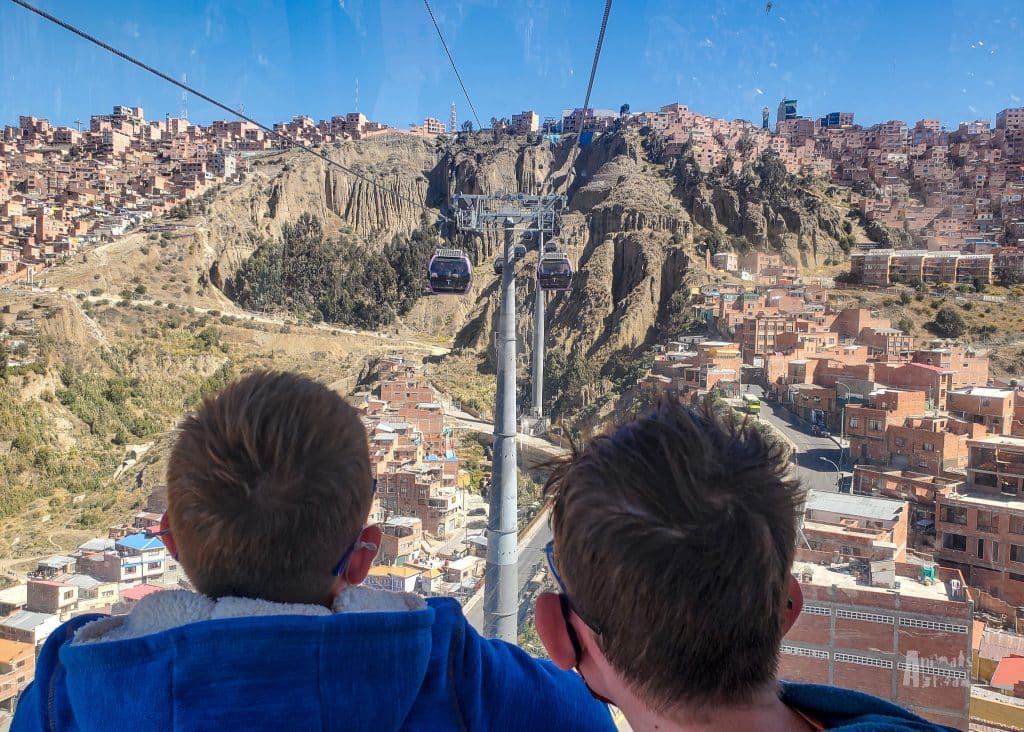
Days 4 & 5: Day Trip to Lake Titicaca and Copacabana
We explored the city across two days, combining walking tours with scenic gondola rides, as some members were still struggling with exhaustion from the altitude. As a result, we ran out of time to make the trip to Lake Titicaca ourselves, but it’s high on our list for next time.
Lake Titicaca is the highest lake in the world (3,812 meters), and the surrounding area is known for its scenic views and Inca ruins. You can take a public bus or join a tour to the lakeside town of Copacabana. From there, explore Isla del Sol, believed to be the birthplace of the Incan sun god, and other archaeological sites like Pilko Kaina Temple.
Single-day and overnight tours are available from La Paz. Keep in mind that the travel time to and from is 5 hours each way, making it a long day trip with kids. Some tours also stop at the Tiwanaku Ruins en route to Lake Titicaca.
Soaring High
La Paz is not a city to rush. From scenic landscapes to historical plazas and vibrant markets, it offers a unique combination of culture and altitude-fueled adventure. The key to enjoying it—especially as a family—is to go slow, rest often, and soak in the experience at your own pace.
Whether wandering moonlike valleys or gliding above the city in a cable car, La Paz invites you to see the world from a whole new perspective—literally and figuratively.
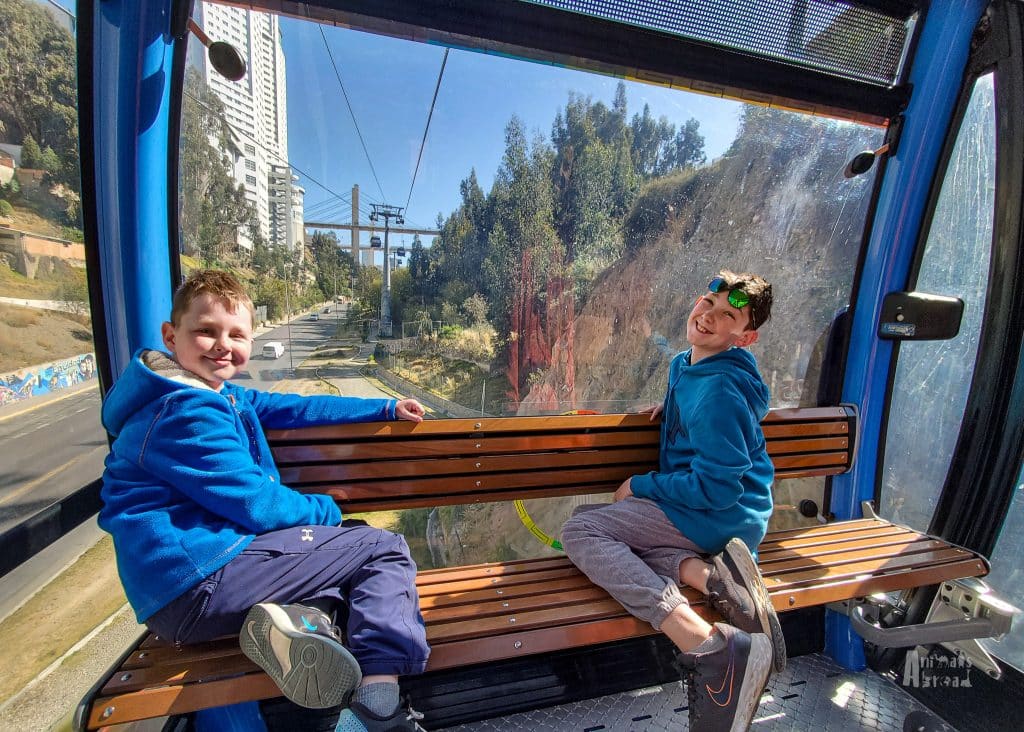
Ready to Explore Bolivia?
Check out these related posts to help plan your trip:
• Bolivia with Kids: A 27-Day Itinerary
• Travelling to the Amazon: An Adventure in Itself
• Exploring Bolivia’s Amazon: Pampas and Madidi National Park
• Chasing Jaguars in Bolivia: A Family Safari in Jaguarland
• Visiting Toro Toro National Park: Know Before You Go
• Bolivia’s Uyuni Salt Flats with Kids: A Family Adventure

